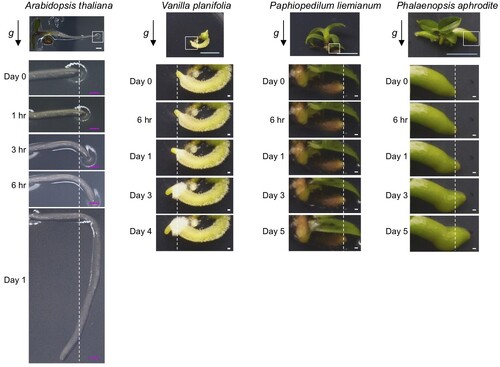Diverse geotropic responses in the orchid family


In epiphytes, aerial roots are important to combat water‐deficient, nutrient‐poor, and high‐irradiance microhabitats. However, whether aerial roots can respond to gravity and whether auxin plays a role in regulating aerial root development remain open‐ended questions. Here, we investigated the gravitropic response of the epiphytic orchid Phalaenopsis aphrodite. Our data showed that aerial roots of P. aphrodite failed to respond to gravity, and this was correlated with a lack of starch granules/statolith sedimentation in the roots and the absence of the auxin efflux carrier PIN2 gene. Using an established auxin reporter, we discovered that auxin maximum was absent in the quiescent center of aerial roots of P. aphrodite. Also, gravity failed to trigger auxin redistribution in the root caps. Hence, loss of gravity sensing and gravity‐dependent auxin redistribution may be the genetic factors contributing to aerial root development. Moreover, the architectural and functional innovations that achieve fast gravitropism in the flowering plants appear to be lost in both terrestrial and epiphytic orchids, but are present in the early diverged orchid subfamilies. Taken together, our findings provide physiological and molecular evidence to support the notion that epiphytic orchids lack gravitropism and suggest diverse geotropic responses in the orchid family.
Jhun‐Chen Chen, Hsiang‐Yin Lin, Ondřej Novák, Miroslav Strnad, Yung‐I. Lee*, Su‐Chiung Fang* (2024) Diverse geotropic responses in the orchid family Plant Cell & Environment, DOI: https://doi.org/10.1111/pce.14975

